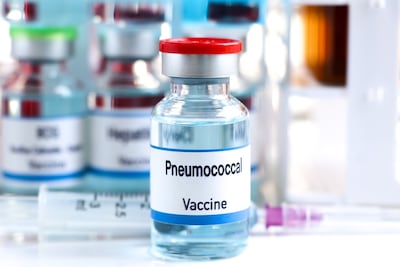Clinical Trials
Chinese firm Sciwind has revealed additional Phase III findings for its promising once-weekly GLP-1 agonist ecnoglutide, just one asset in a burgeoning Chinese sector that could see the emergence of new rivals to current global leaders in obesity and diabetes.
Interim results from the Phase III REMARK study presented at WCLC showed the Chinese company’s second-generation ALK/ROS1 inhibitor met its primary endpoint as a first-line therapy in ALK-positive advanced NSCLC.
With the upcoming patent expirations in oncology biologics, biosimilar developers must act quickly to capitalize on ADCs and BsAbs - discover why.
Interim results from the Phase III REMARK study presented at WCLC showed the Chinese company’s second-generation ALK/ROS1 inhibitor met its primary endpoint as a first-line therapy in ALK-positive advanced NSCLC.
PolyPid's D-PLEX100 meets Phase III endpoints this time around, significantly reducing surgical point infections in abdominal colorectal surgery, and is set for a US approval submission early next year.
The US precision medicine company hopes its drug response predictor technology will enhance responses to the chemotherapy Ixempra on the basis of promising data from a handful of breast cancer patients in a Phase II trial, marking a positive turn in its journey to date.
Screaming is a powerful human behavior with deep evolutionary roots. Turning up the volume affects our bodies and brains in surprising ways, influencing stress, communication, and even group dynamics. Understanding the science behind screaming reveals its complex role in both health and society.
The nod will help unlock a national market for the partners’ Dupert (fulzerasib) in which roughly 50,000 people are expected to be newly diagnosed with lung cancer harboring the KRAS G12C mutation in 2025. Meanwhile, two other homegrown rivals are also closing in on marketing clearances in China.
A disastrous Phase II miss for the pulmonary arterial hypertension candidate AV-101 leaves Aerovate drifting. Could Gossamer stand to benefit?
GLP-1 receptor agonists could play a big role in tackling neurodegeneration and a new academic study has raised expectations of Novo Nordisk’s latest semaglutide Phase III results
Attendees at this year's European Society for Medical Oncology meeting in Barcelona can look forward to a range of interesting datasets, from Phase III trials of established products in new settings to preliminary studies of novel products coming through the pipeline.
The commercial implications of the miss are hard to call, but separate trials could offer hope.
Amgen’s Imdelltra for small-cell lung cancer is one of two bispecific T-cell engagers approved for solid tumors, but data at the WCLC meeting show other DLL3-targeting BiTEs may be on the way.
An academic study of GLP-1 agonist showed promise in patients with the painful skin condition but with no signs that the Danish drugmaker will pursue the indication, smaller players in the space may be interested.
Dalzanemdor missed its primary endpoint in a Phase II Parkinson’s study, Sage announced, following April’s Phase II miss in Alzheimer’s. Phase II data in Huntington’s are still expected this year.
J&J acquired Taris in 2019 to gain access to TAR-200 and its drug delivery platform. Now, early clinical data suggest the product could delay or remove the need for cystectomy in several bladder cancer settings and the US healthcare giant is eyeing multi-blockbuster sales.
The FDA is scheduled to pronounce on Bristol Myers Squibb’s potential blockbuster on 26 September. But might forthcoming compounds be more effective?
The company’s VAX-31 against 31 pneumococcal serotypes outperformed Pfizer’s market-leading Prevnar 20 and could provide the broadest coverage of any vaccine in its class.
We may then state the above equation in this way: The work done by the resultant force acting on a particle is equal to the change in the kinetic energy of the particle.
The Barcelona meeting saw early data from two candidates from Incyte and Pfizer which suggest some progress for a new drug mechanism that has so far underwhelmed.

















